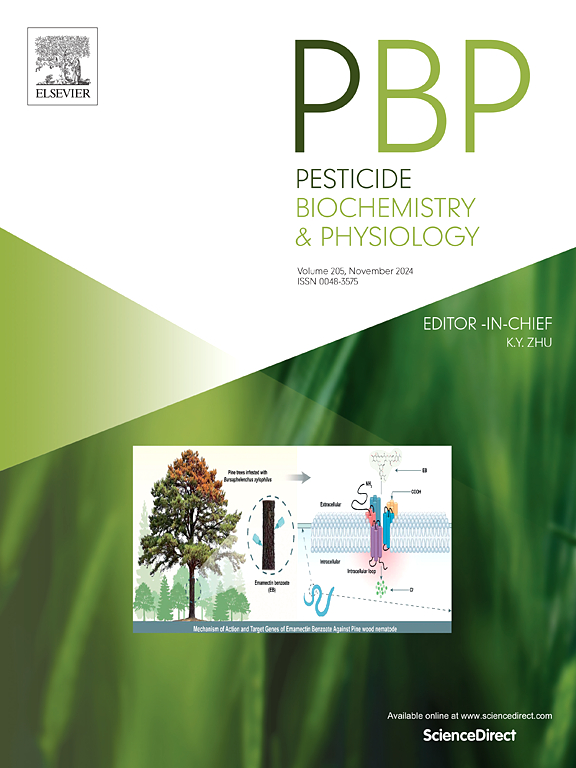Identification of an α-galactosidase with high affinity and synergistic activity against Bacillus thuringiensis App6Aa2 toxin in Bursaphelenchus xylophilus
IF 4.2
1区 农林科学
Q2 BIOCHEMISTRY & MOLECULAR BIOLOGY
引用次数: 0
Abstract
The App6Aa2 toxin, derived from Bacillus thuringiensis, is nematicidal and highly toxic to Bursaphelenchus xylophilus. Receptors play a critical role in the mechanism of B. thuringiensis crystal toxin toxicity, yet the specific binding receptors for App6Aa2 in B. xylophilus have not been identified. This study identified a GPI-anchored protein, α-galactosidase (BxGal), in B. xylophilus as a potential binding protein. Western blotting and ELISA assays confirmed a high binding affinity between BxGal and App6Aa2 (Kd = 24.5 ± 11.2 nM). Remarkably, combining App6Aa2 with the BxGal protein produced a synergistic effect, significantly increasing nematode mortality from 25 % to 81 % (P < 0.05), thereby enhancing the toxicity of App6Aa2 against B. xylophilus. Besides, RNAi silencing of BxGal in nematodes had no specific effect on App6Aa2 toxicity at high concentrations, while mortality increased slightly at lower concentrations. These findings indicate that BxGal is a high-affinity binding protein for App6Aa2; it does not function as the primary receptor and warrants further investigation into its role in modulating nematode susceptibility to App6Aa2.

求助全文
约1分钟内获得全文
求助全文
来源期刊
CiteScore
7.00
自引率
8.50%
发文量
238
审稿时长
4.2 months
期刊介绍:
Pesticide Biochemistry and Physiology publishes original scientific articles pertaining to the mode of action of plant protection agents such as insecticides, fungicides, herbicides, and similar compounds, including nonlethal pest control agents, biosynthesis of pheromones, hormones, and plant resistance agents. Manuscripts may include a biochemical, physiological, or molecular study for an understanding of comparative toxicology or selective toxicity of both target and nontarget organisms. Particular interest will be given to studies on the molecular biology of pest control, toxicology, and pesticide resistance.
Research Areas Emphasized Include the Biochemistry and Physiology of:
• Comparative toxicity
• Mode of action
• Pathophysiology
• Plant growth regulators
• Resistance
• Other effects of pesticides on both parasites and hosts.

 求助内容:
求助内容: 应助结果提醒方式:
应助结果提醒方式:


